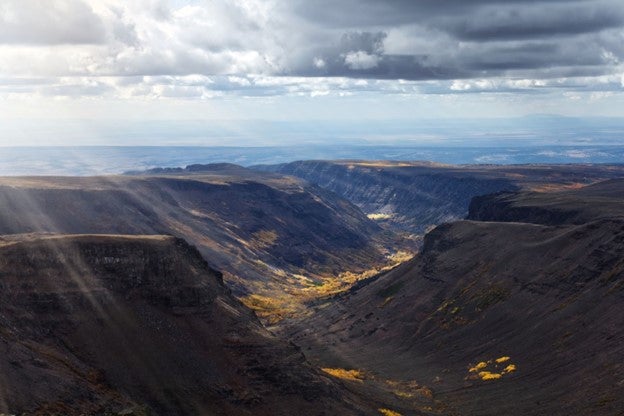The Colorado legislative session has begun at a key time for water in Colorado and the west. Though we’re off to a solid snow year, the Colorado River is crashing and the prolonged drought we’re in requires improvements to how we manage water. Fortunately, both Speaker McCluskie and Senate President Fenberg have prioritized water for their chambers. And while advancing water law and policy at the capitol is notoriously complex and fraught, we hope other members of the general assembly will follow the footsteps of their leadership. Unfortunately, there’s no quick solution to fix water scarcity in Colorado; that means we must begin engaging the multitude of issues required to tackle this challenge immediately. So, EDF has put together the following guiding principles to help legislators create the most durable, multi-faceted solutions for Colorado water management and law-making. Read More
On the Water Front
Drops of wisdom for Colorado legislators
New report analyzes voluntary agreements as tool for managing Oregon’s groundwater

Big Indian Gorge in Steens Mountain, the southern border of Harney Basin
In southeastern Oregon’s Harney Basin, you’ll find nationally significant wetlands, scenic farms and ranches, a strong sense of community, and one of the most severe groundwater overdraft issues in the state.
Recent media series, such as Race to the Bottom and Draining Oregon, have highlighted water challenges that have affected communities and ecosystems in the Harney Basin and across Oregon. As the situation becomes particularly dire in the Harney Basin, EDF and Culp & Kelly, LLC have released a new Voluntary Agreements Analysis report to advance the community’s understanding of one potential approach for locally driven water management. Read More
A conservation win and groundwater loss: Arizona ends 2022 session with mixed water record

The Verde River, one of the last free-flowing rivers in the Southwest, remains unprotected after another year of in action to address rural groundwater pumping in Arizona.
After months of negotiations, the Arizona Legislature passed a major water spending plan last month with funding for new conservation efforts to address deteriorating water supplies. However, for the fourth year in a row, state leaders failed to pass legislation to address unlimited groundwater pumping, missing an opportunity to enable a water secure future for 1.5 million rural residents and the state as a whole.
Colorado scores two more #WaterWins to help address worsening drought and capture federal funds
As Colorado’s drought worsens with the snowpack melting at a ridiculous rate, the state Legislature has stepped up by sending two key bills to the governor’s desk to increase funding for water conservation, river health and ecosystem restoration.
The new funding will help Colorado take advantage of even more federal infrastructure dollars approved last year in the Bipartisan Infrastructure Law, which dedicates $8.3 billion to western water projects.
The Colorado River is getting closer to tanking. Can we free ourselves from the long arc of depletion?

My mom on a houseboat and my dad reveling in the “glory days” of Lake Powell, May 1981.
“They would come to the river to see a reflection of their own liberated minds, running free and easy…In the midst of what had once been regarded as the bleakest scarcity they would find abundance.” —Donald Worster, Rivers of Empire
Lake Powell, our nation’s second-largest reservoir, dropped 40 feet in just the last year to a new record low, triggering an unprecedented set of emergency actions. The changes underway at Powell provide a striking illustration of how a new era of aridification in the West is pushing a river management culture steeped in assumptions of the past to the brink. It’s been a few years since I’ve visited Lake Powell, so two weeks ago I went back to see how it’s changed with my own eyes.
As local movements for groundwater protection rise, will state leaders finally respond?
Across Arizona, the consequences of unlimited groundwater pumping are becoming untenable for many communities. In response, Arizona state Rep. Regina Cobb, R-Kingman, has introduced legislation, for the third year in a row, to enable rural communities to manage their groundwater through a new opt-in program called Rural Management Areas (RMAs).
Although the bill again did not receive a committee hearing, this year is very different from the past. Over the last several months, more residents and local stakeholders are becoming engaged and organized around water security and water self-determination, getting mobilized in local settings like town halls, community meetings, and even residents’ living rooms and porches. It has become clear that the people of rural Arizona no longer accept being ignored on water issues at the state level. Here are a few recent examples:
- Residents in Cochise County, fed up with state inaction to address unfettered groundwater pumping, have submitted signatures for a ballot measure to ask voters to approve a new Active Management Area (AMA) in the Willcox Basin in a local election in November. They are now gathering signatures for a second AMA in the Douglas Basin.
- Read More









